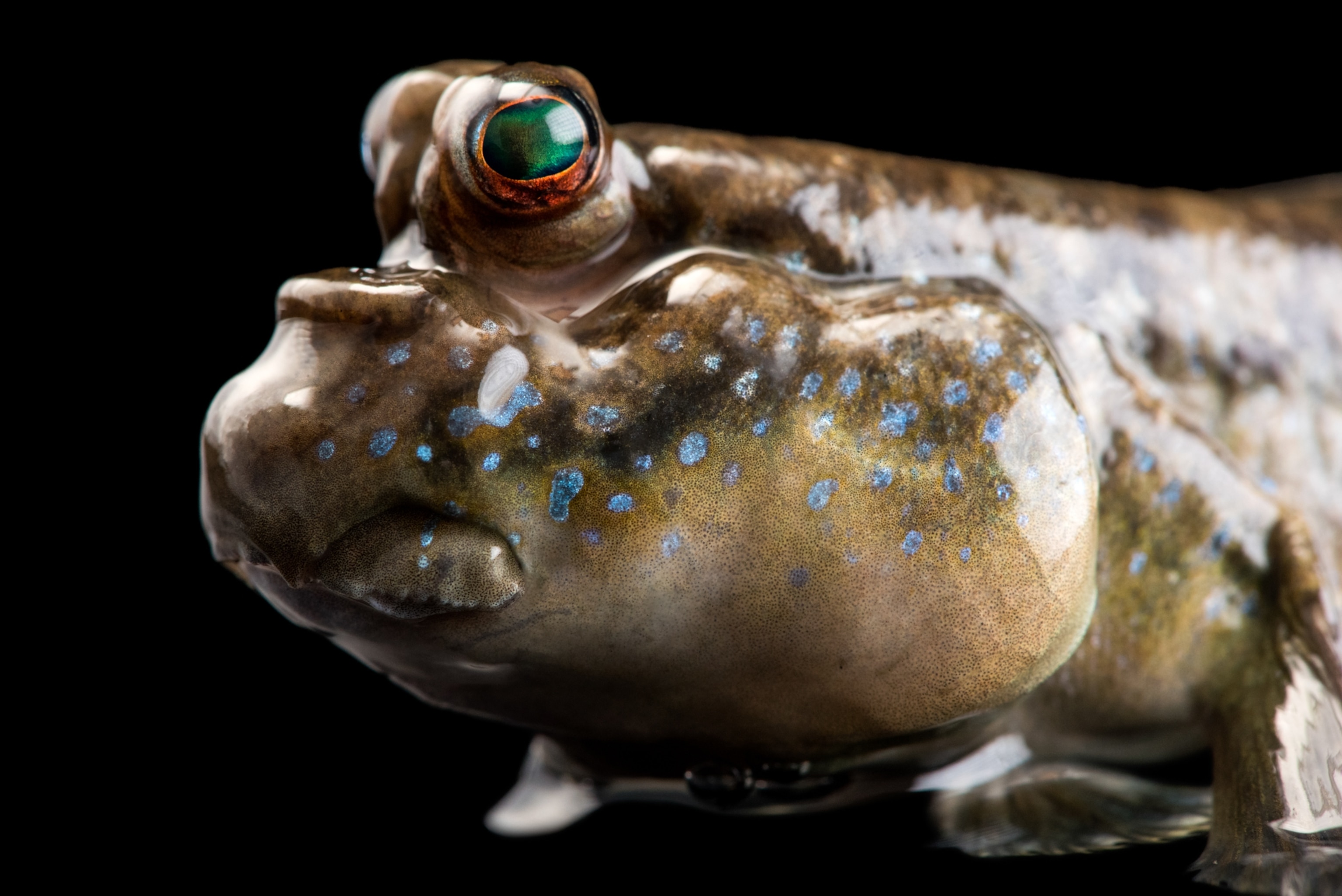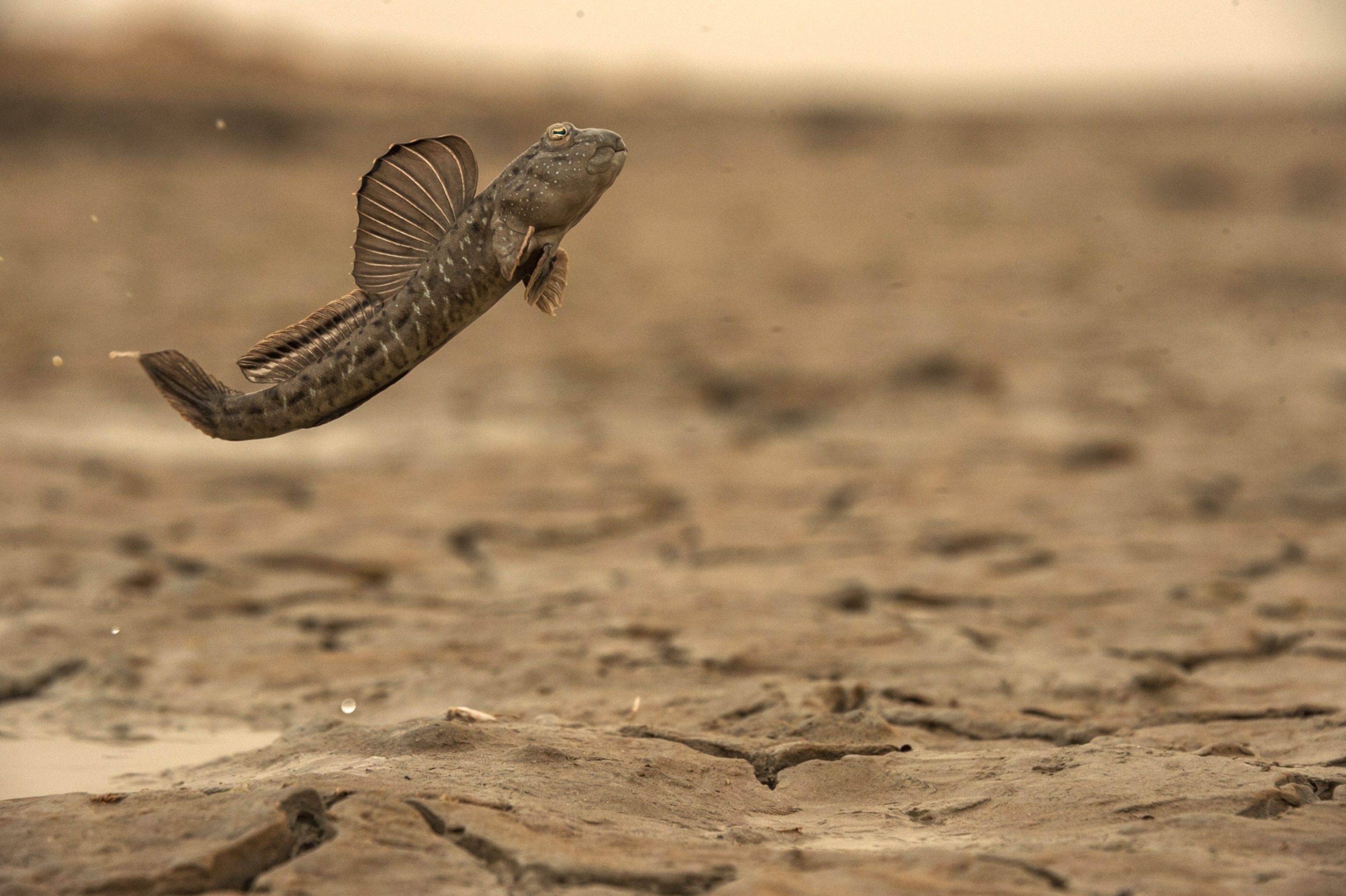Why did humans evolve to blink?
To approach a question 400 million years in the making, researchers turned to mudskippers, blinking fish that live partially out of water.

By the time you finish reading this sentence, you will have blinked at least once. Humans blink 15 to 20 times each minute, a mostly unconscious snapping shut of the upper eyelid that keeps our eyes clean, moist, and protected. It’s a reflex shared by nearly all limbed land vertebrates (what scientists call tetrapods) and is almost completely absent in aquatic animals like fish, their ancestors.
A team of evolutionary biologists wanted to know: How and why did blinking evolve? Since fish began to crawl onto land nearly 400 million years ago, studying the process in action is impossible. Not only that, eyes, muscles, and other squishy bits don’t generally survive in the fossil record.
So, the researchers turned to mudskippers, a group of amphibious fish living in mudflats in Africa and Asia that evolved blinking independently of tetrapods.

Using ultra high-speed video and state-of-the-art scanning technology, a new study published in the Proceedings of the National Academy of Sciences found that both non-blinking fish and mudskippers have always had the muscles needed to blink. That means that our tetrapod ancestors’ transition to dry land—and the requirement to see well—is likely what spurred the phenomenon of blinking.
The fact modern-day fish have the muscles to blink has “brought us a new perspective on some of the requirements to actually see on land,” says Sandy Kawano, an evolutionary biologist at George Washington University in Washington, D.C., who wasn’t involved in the study. (Read how our fish ancestors had fins made for walking.)
“That actually suggests that there's really not that big of a hurdle in order for fishes to be able to see effectively on land.”
Fish out of water
For its first few billion years, life on Earth was a watery affair. Around 375 million years ago, however, a few fish made their first tentative moves out of the ocean and onto dry land. This brave new world filled with potential food and a lack of predators promised almost limitless opportunities—but only if the tetrapods could see them.
“If their eyes were built for living underwater, once they got onto land, things would have been really blurry. They would have basically been nearsighted,” Kawano says. (See a “walking fish” that shows evolution in action.)
They would also have suffered from chronic dry eye, since the cornea needs to be wet to protect and oxygenate the eye. Animals also needed a way to remove debris and otherwise protect their delicate eyes. That’s why nearly all tetrapods accomplish this by blinking.

Blink of an eye
To understand how blinking first evolved, authors Tom Stewart of Penn State University, Brett Aiello of Seton Hill University, and Neil Shubin of the University of Chicago teamed up with engineer Simon Sponberg at Georgia Tech to study two mudskipper species, Periophthalmus barbarus and P. septemradiatus.
High-speed video recordings of the blinking mudskippers in the lab revealed that the "walking" fish accomplish this feat by pulling their eyeball back into its socket to allow the skin to close around it. (Read about mudskipper mating habits.)
Computed tomography images of the mudskippers’ musculature, particularly around the skull, identified the six muscles needed to retract the eye, muscles that they shared with another study species, the closely related but fully aquatic round goby, Neogobius melanostomus.
A custom-built humidity chamber showed that both mudskippers blinked more frequently in drier air. When the researchers applied small particles to the mudskipper eyes, 97 percent of them were removed from the cornea with a single blink. And when the scientists used a small probe to touch the eye, they found the mudskippers reflexively blinked, just like tetrapods. This means that blinking serves the same function in mudskippers as it does in people.
“This shows you can have fully terrestrial-style behaviors with just a retraction and a simple fold of skin around the eye. You don’t need to have something as structurally elaborate or complicated as our own eyes,” Aiello says.
'Powerful methods'
Bruno Simões, a zoologist at the University of Plymouth in the U.K., calls the work “very, very cool,” praising its “elegant methods” to identify why and how blinking came to be.
“They used quite powerful methods to test, step by step, why these animals developed a blinking system,” Simões says.
Kawano echoes Simões’s admiration, saying their choice of a mudskipper model was particularly apt. “They’re not our ancestors, and yet we see these parallels between what mudskippers are doing and what some of the tetrapods are doing.” (Read how hiccupping also evolved from fish.)
Stewart and Aiello caution that this isn’t the final word on the evolution of blinking. Just because blinking evolved one way in mudskippers doesn’t mean that’s what happened in tetrapods, Stewart says. It does, however, give paleontologists a place to start looking for evidence of blinking in the fossil record.
“Convergent evolution—the independent evolution of similar traits in different lineages—gives biologists a really exciting way to understand how evolution works,” Aiello says.





